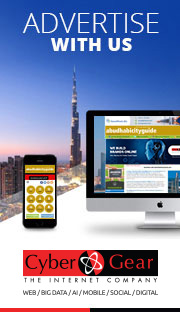|
A third day of panel sessions, interactive workshops, and artistic performances has come to an end at CultureSummit Abu Dhabi 2019. Organised by Department of Culture and Tourism - Abu Dhabi (DCT Abu Dhabi), the event is taking place through 11 April at Manarat Al Saadiyat in Abu Dhabi.
Over five days, CultureSummit Abu Dhabi 2019 is presenting a dynamic series of panel discussions and interactive workshops under the topics of art, media, heritage, museums, and technology, as well as cultural performances and networking events. This edition’s theme of ‘Cultural Responsibility & New Technology’ addresses questions of how cultural agents can be more engaged in addressing global challenges, and how creativity and technology may be harnessed for positive change.
Day Three kicked off with What are the new frontiers?, a session moderated by John Prideaux, US Editor at The Economist, exploring how innovation and new ways of thinking are opening up new horizons in the news and in cultural media. How are these transforming our interaction with, and interpretation of, the world around us? Amar Bakshi, Founder, Shared_Studios, spoke about his ‘Portals’ project, which uses technology to connect strangers from diverse backgrounds. Shipping containers are set up in cities around the world, where people can come to take part in a live video conference with a person from another country, and a completely different background. In facilitating conversation, the project aims to forge connections between diverse groups, and teach us to embrace difference. It utilises technology to unite rather than separate us, which is often the case. He observed that technological institutions address us as individual consumers, rather than being a true community resource, and integrating tech into our lives this way has consequences.
Maher Chmaytelli, Head of the Middle East and North Africa Breaking News Desk, Reuters, spoke about the revolution in war reporting due to the developments in satellite imagery. Image resolution has become so good that journalists have full access to a place, which is most of what they need to get the story. Also the rise of social media and blogging has changed the business hugely - each person can be a news reporter, even in the smallest, most remote village. Residents can be live tweeting from war zones, even during a media blackout when no reporters have access.
Ricardo Karam, Talk Show Host and Founder of TAKREEM Foundation, revealed that he has had difficulty dealing with such rapid technological changes in the last decade. In today’s news cycle, the focus is on images and sensational or fake news, not the human element. He spoke to the need for role models and inspirational figures, particularly in the region. So with his journalism, he has decided to focus on human nature, searching for remarkable people to profile around the world. But even this has proven controversial; the region is in such turmoil that there is no neutral subject.
What constitutes public art? explored the notion of this art form, with moderator Tim Marlow, Artistic Director of the Royal Academy of Arts, asking: Is public art a category in its own right? Does working in the public domain shift the responsibility of artists? Do public monuments still have meaning in the 21st century, and should commissioners look very carefully at permanence versus temporariness? Artist Wael Shawky explained how his work investigates and focuses on societies in transition and the dream of development. Much of his work is not public art in the sense that we normally think of, but more public performances, such as a film he made of him walking through a grocery store, reciting a passage from the Quran. He stated that he believes artists do have a certain responsibility in their public art, and it should certainly never veer into propaganda.
Architect Farshid Moussavi OBE observed how art and architecture have grown more distinct from each other today, whereas before, architecture was considered an art form. Public art is sometimes now seen as a way to fix ‘bad’ architecture. She posited that collaboration is key; architects are great collaborators and cooperation and exchange with artists can yield fantastic results; however, when public art is forced onto developments, it is often not successful. She also noted that architects never escape the public arena; it is always a dimension of their work.
Artist Oliver Beer talked about his art practice, which oscillates between monumental and intimate, often focusing on sound. He captures the sound and frequencies of objects, with one piece forming an ‘orchestra’. In his largest public art piece, he microphoned the riverbed of the Seine. He noted that private work might be private for a while, but if it survives long enough, it eventually becomes public. Art that is socially engaged is eroding the ability for public audiences to be indifferent.
|


